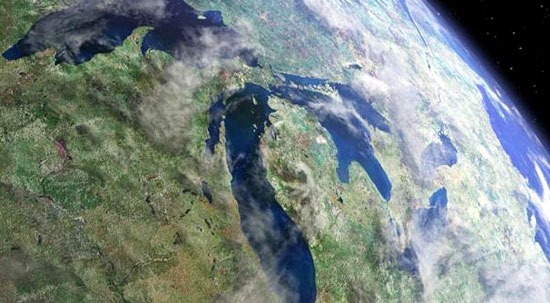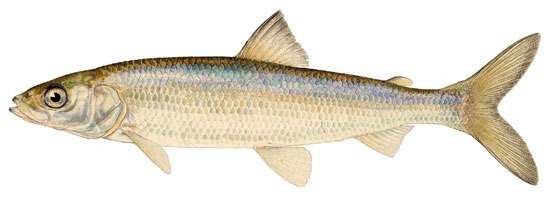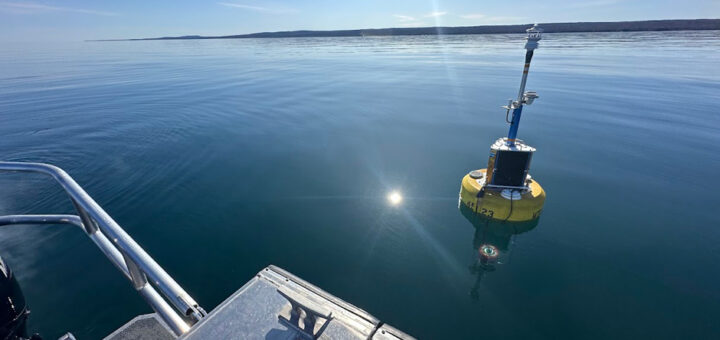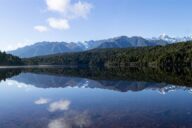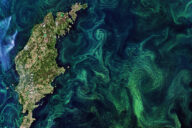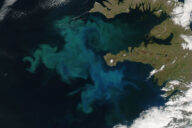White Lake: A Timeline of Its Turnaround
0White Lake was placed on the Great Lakes Areas of Concern list in 1985 after organic solvents were found leaching in. Its water quality was impacted by contaminated sediment, high levels of heavy metals and diminished shoreline habitat.
But nearly 30 years later, the lake that rests on the eastern shore of Lake Michigan is likely to be the first Great Lakes AOC removed from the list in all of Michigan and only the second of all 43 Great Lakes AOCs – a reminder that environmental degradation, even over a short time, can have long-term effects.
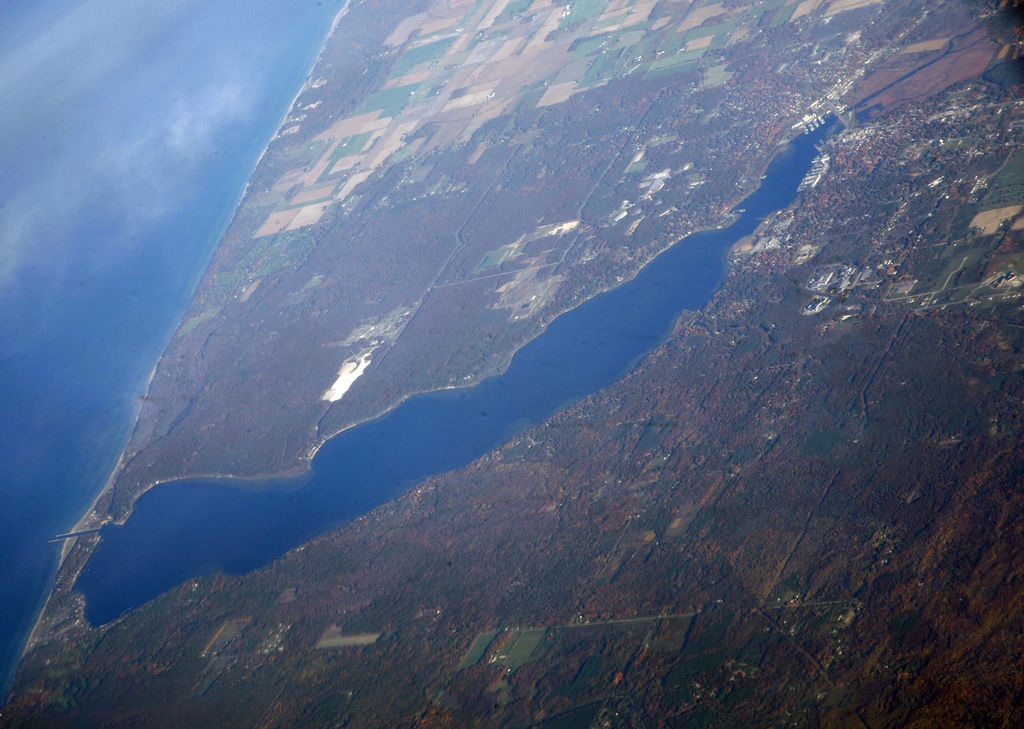
White Lake as seen from the sky. (Credit: Doc Searls via Creative Commons)
To put White Lake’s rehab into perspective, here’s a timeline of its turnaround:
- 1985 – White Lake added to list of Great Lakes Areas of Concern.
- 1987 – Remedial Action Plan put in place.
- 2001 – The State of Michigan and Genesco, Inc. announce they will split the $6.7 million cost of removing 73,000 cubic yards of contaminated sediment from White Lake’s “Tannery Bay” – an area used for dumping cow hides back to the 1800s.
- 2002 – Genesco, Inc. and the State of Michigan remove 85,000 cubic yards of contaminated sediment from “Tannery Bay” – 12,000 more than expected.
- 2003 – Occidental Chemical Company dredges 12,000 cubic yards from the lake itself. A discharge pipe built by Occidental had been found to leach organic solvents.
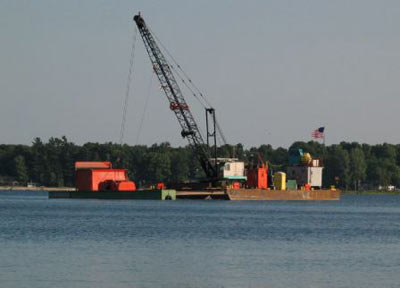
Dredging barge prepping for activities at the Occidental Clean-up site. In 2003, 10,500 cubic yards of contaminated sediment were removed from White Lake at the outfall, eliminating the last known “hot spot” in the system. (Credit: U.S. EPA)
-
2005 – Koch Chemical installs a new well for the City of Whitehall because groundwater contamination overlapped the city’s “groundwater protection area.”
-
2005 – The Muskegon Conservation District completes a shoreline habitat assessment and finds responsible development and appropriate land usage is needed. The findings are published in a Community Action Plan.
-
2010 – U.S. EPA Great Lakes Restoration Initiative awards a $2.1 million grant to the Muskegon Conservation District. The funds pay for seven habitat restoration projects that:
-
restore 5,100 linear feet of shoreline;
-
create or restore 35 acres of wetland;
-
reconnect 8 acres of riparian corridor;
-
and remove more than 27,000 cubic yards of shoreline debris.
-
- 2011 – The restriction on dredging activities Beneficial Use Impairment is removed.
-
2012 – Three Beneficial Use Impairments are removed:
-
degradation of benthos;
-
eutrophication or undesirable algae;
-
and restrictions on drinking water, taste or odor.
-
-
2013 – Restrictions on fish and wildlife consumption are removed in February 2013.
- 2014 – Two Beneficial Use Impairments remain (degradation of fish and wildlife populations & degradation of aesthetics). Officials say White Lake should be removed from the Great Lakes AOC list by summer.




